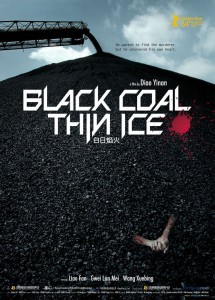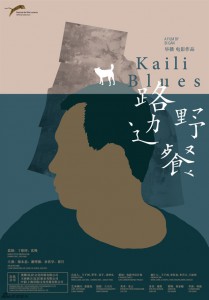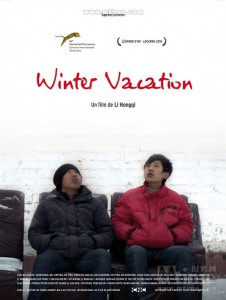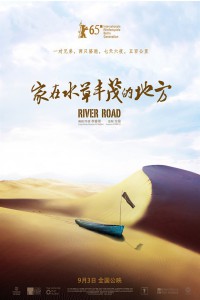The Visibility and Invisibility of Chinese Independent Films
Post by Sabrina Q. Yu, Newcastle University
This post continues the ongoing “From Nottingham and Beyond” series, with contributions from faculty and alumni of the University of Nottingham’s Department of Culture, Film and Media. This week’s contributor, Sabrina Qiong Yu, completed her PhD in the department in 2008.
At the recent Locarno International Film Festival, 26-year-old Chinese director Bi Gan won Best Emerging Director as well as Special Mention for the First Feature award. Five years ago, Locarno awarded its top prize, the Golden Leopard, to another previously unknown Chinese director, Li Hongqi. In 2014, Berlin’s Golden Bear went to Black Coal, Thin Ice (2014), directed by Diao Yinan. These three directors share a common identity in China—independent filmmaker—and their award-winning works are often labeled as independent films. But the term “independent” in the Chinese context is quite slippery and under-defined, and in fact is becoming increasingly controversial and sensitive.
In their 2006 book, Paul Pickowicz and Yingjin Zhang refer to a discrepancy in the precise language used to characterize non-state filmmaking in China. They note that “‘underground’ is a term preferred by overseas media and embodies expectations of the subversive function of this alternative film culture in contemporary China,”[1] while Chinese filmmakers, media and scholarship all favor “independent,” “not necessarily due to censorship pressures.”[2] However, the situation has now taken an interesting turn. “Independent” has become a politically sensitive term and easily draws attention from the authorities. Consequently, Chinese media, scholars and many indie filmmakers carefully avoid the term, just as the label “underground” met with disfavor a decade ago. Apart from a few collections of interviews with indie filmmakers and the very limited number of articles written mostly by indie-circle insiders, indie films are out of sight in Chinese scholarship. It is even harder for the term to appear on official media, especially after the authorities’ forceful shutdown of or severe interference with nationwide indie film festivals since 2012.
In the past couple of years, in my numerous formal or informal discussions with Mainland Chinese scholars, film officials and practitioners, I notice behind various attitudes towards indie films—which include disdain, caution and criticism—there is something in common; that is, unfamiliarity with indie films. The general impression of indie films remains tied to the work of first-generation indie filmmakers emerging in the 1990s such as Wang Xiaoshuai and Jia Zhangke, now having mostly gone above ground and renewed their identity as arthouse directors. The situation is similar in Western scholarship on Chinese film. Compared to Chinese-language scholarship, there is much more discussion of Chinese indie films (and particularly of indie documentaries) in English-language criticism, but this discussion is largely confined to the work of the early and more established indie filmmakers. Indie films springing up during the past ten to fifteen years have not received much academic attention, largely due to the very limited access to such films.
Generally, even knowledgeable parties hold a set of fixed ideas about Chinese indie films. Firstly, indie films are often regarded as low quality because of low budgets, the use of DV and amateur actors. A common perception, from both inside and outside of China, is that indie films are not up to an implicit professional standard and lack aesthetic value. This preconception can partly explain why many Chinese scholars are reluctant to pay attention to indie films. Probably due to a similar judgment, Western scholars and critics discuss Chinese indie films mainly from anthropological and sociological perspectives, rather than focusing on their aesthetic features.
In the Chinese context, indie films usually refer to the films not approved by government censors. Unsurprisingly, another familiar charge leveled at indie films within China relates to their avowedly gloomy tone and depressing representation of reality, even if not touching on sensitive or taboo subjects. This represents the opinion on indie films within a wider public in China. Indie films are often blamed for their lack of “positive energy,” a term heavily promoted by mainstream ideology. Western critics hold a much more positive attitude towards Chinese indie films, but show a similarly stereotypical view. Although the labels “underground film” and “dissident film” have been gradually phased out in Western writing on Chinese indie films, the attention to these films still largely lies in their supposed free expression and courageous handling of forbidden or marginalized subjects. In the West, Chinese indie films are discussed mainly in terms of their confrontation with censorship, and indie filmmakers still carry the currency of anti-authority. In a word, indie films are highly politicized both in China and the West.
The third often-heard accusation on Chinese indie films is that they cater to the West, based on the fact that indie films, from the outset, have been supported by Western film festivals and festival-related funds. Excluded from domestic film distribution and exhibition systems, a few indie film pioneers have paved a road to success for numerous Chinese indie filmmakers to follow; that is, to gain awards and reputation at international film festivals and then get opportunities and funds for their future film projects. Indie films are hence given a name—festival films—both in Chinese and English critical discourse. Although the label of “banned film in China” once added extra cultural capital to some indie films and won them sympathy at international film festivals, it is imprudent to claim that indie films are made only for the West. Indeed, I would argue that deep-rooted biases towards, or at least a partial view of, indie films result from an ignorance of the richness and dynamics in Chinese indie films as well as a failure to keep up with fast-developing and highly creative indie filmmaking in contemporary China. While the term of “independent” is quite visible in certain contexts, Chinese indie films themselves are largely invisible.
I do not have space here to survey the lengthy debate on definitions of indie films or to provide an overview of Chinese indie filmmaking in the 21st century. Instead, I simply want to point out that the above three clichéd perceptions of Chinese indie films are easily challenged by the reality of indie filmmaking. The numerous awards Chinese indie films won at different international film festivals in recent years speak to the artistic quality of these films. Despite the restrictions in all aspects of film production, indie filmmakers offer the most exciting experiments and inventions for contemporary Chinese cinema, in sharp contrast to those commercially successful but artistically banal mainstream films that have contributed to Mainland China’s box-office miracle in the past few years. In recent indie filmmaking, although a strong interest in marginalized or sensitive subjects still exists, more attention has been paid to the changing society and to ordinary Chinese people who are faced with all sorts of tremendous changes (for example, Li Ruijun’s “earth trilogy”—The Old Donkey [2010], Flying with the Crane [2012] and River Road [2014]—which explore the issue of the inheritance of traditions). Neither indulging in the dark side of the society nor presenting the visual evidence of a corrupted and chaotic country can justify the diverse topics of contemporary Chinese indie films. Finally, while international film festivals and film funds still attract Chinese indie filmmakers, more venues for the production, distribution and exhibition of indie films have emerged in the past fifteen years, including numerous domestic indie film festivals and exhibitions committed to showing indie work, and some domestic film companies such as Heaven Pictures Group that promote and support high-quality indie films. Furthermore, more and more indie films now seek approval from censors in order to reach a wider audience. The definition and scope of Chinese indie films are becoming increasingly unstable and complex. Notably lacking industrial support and suffering from ideological control, Chinese indie films are nonetheless writing a new chapter in the history of Chinese cinema, and undoubtedly deserve more critical attention.
Notes
[1] Paul G. Pickowicz and Yingjin Zhang (eds.), From Underground to Independent: Alternative Film Culture in Contemporary China (Lanham, MD: Rowman & Littlefield, 2006), pp. viii-ix.
[2] Ibid, p. ix.






